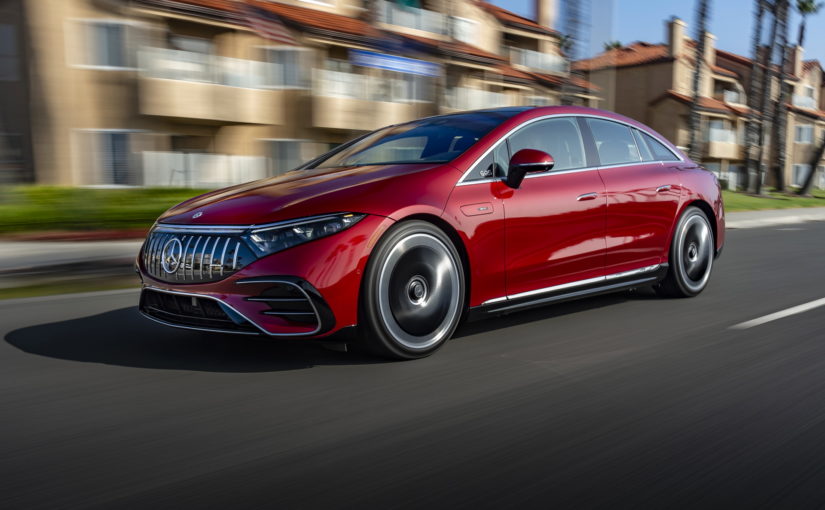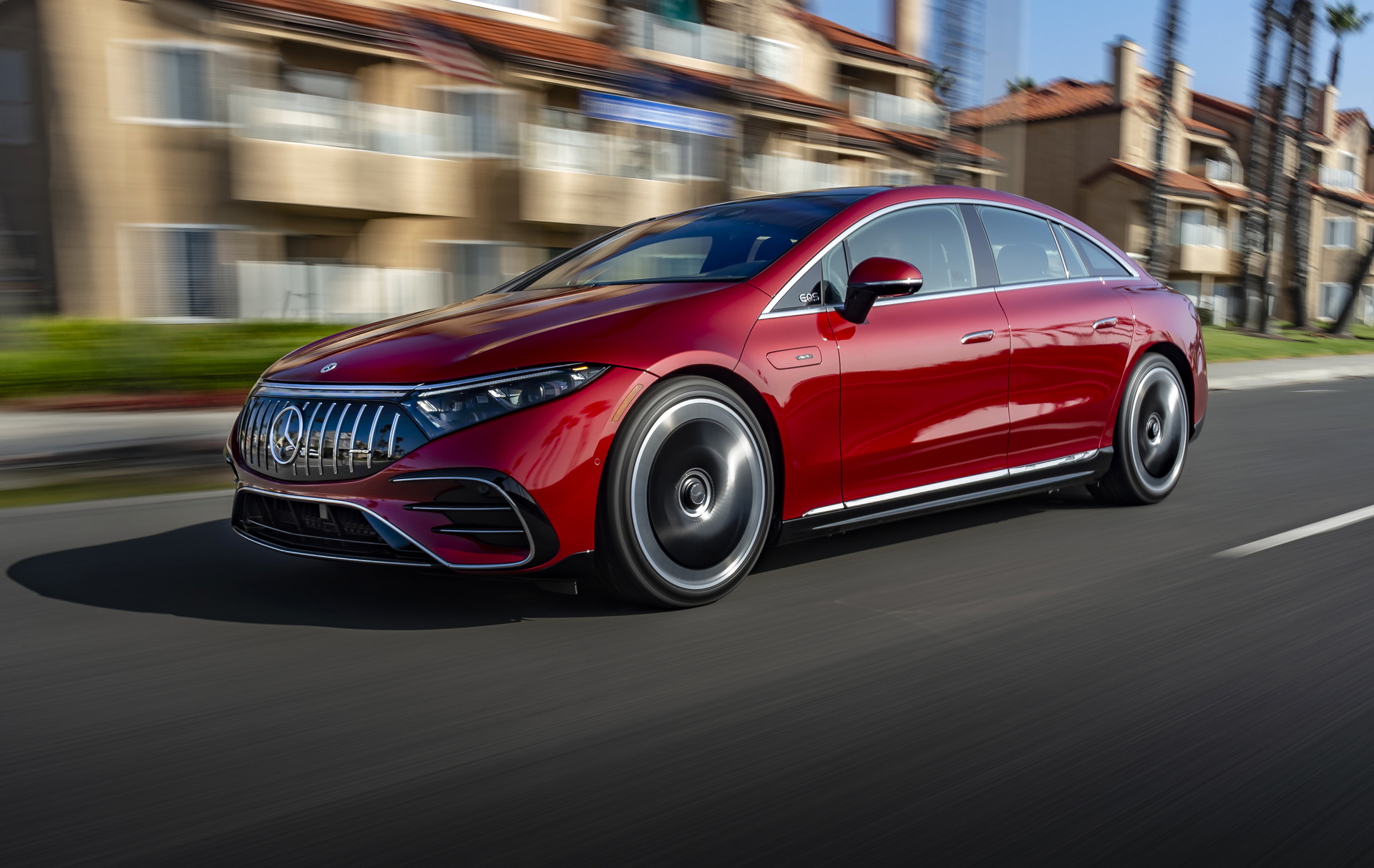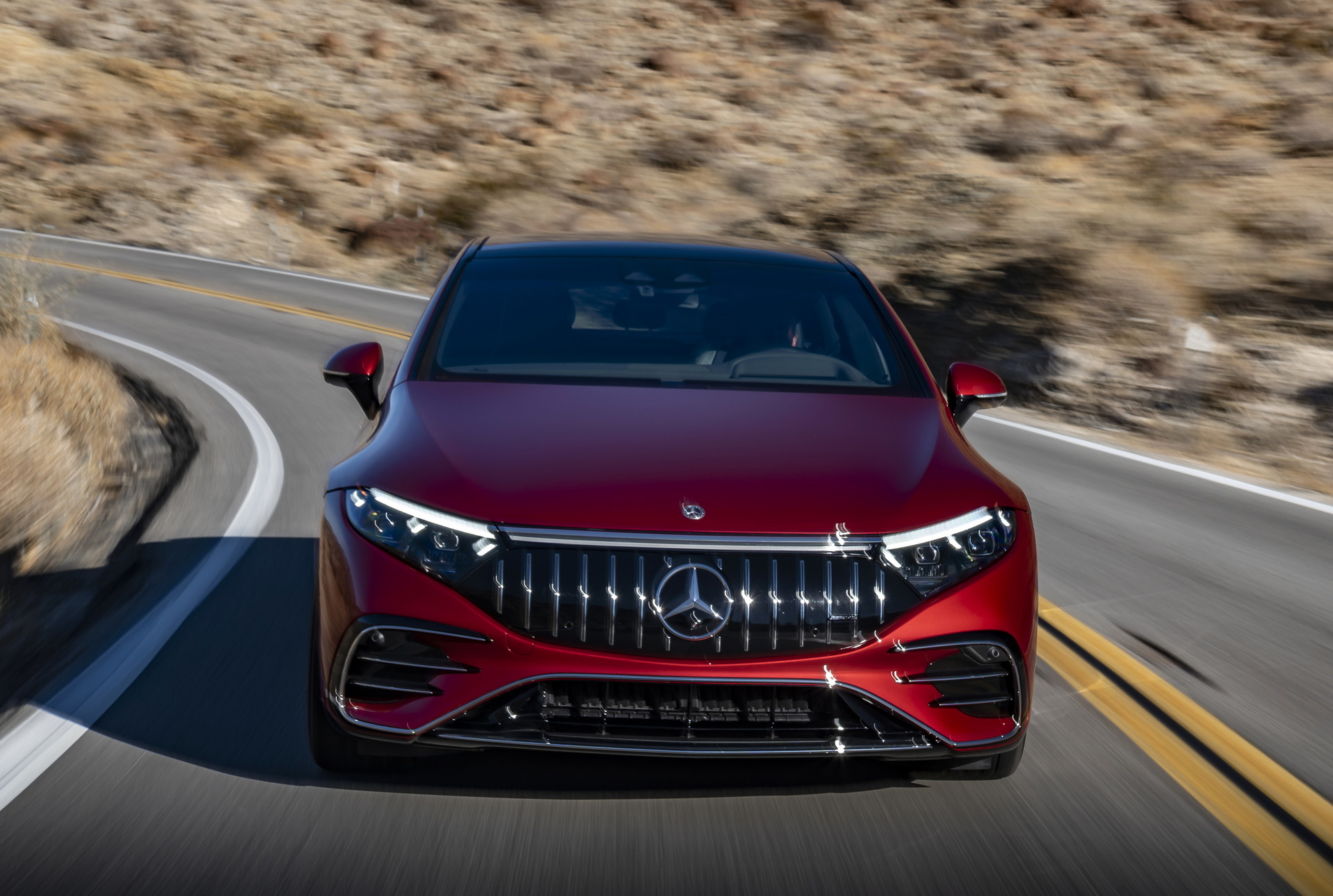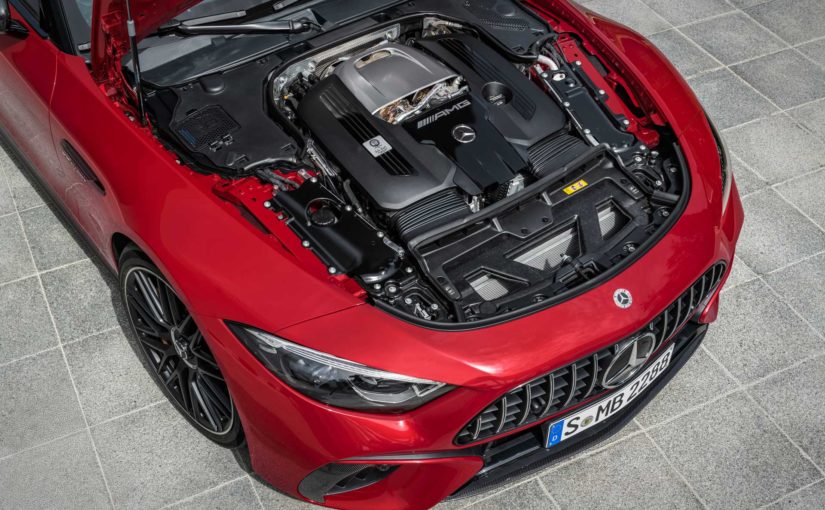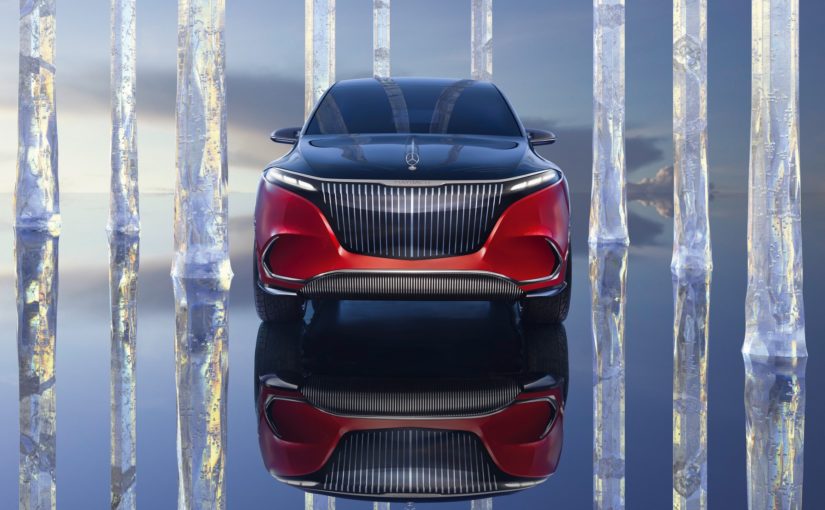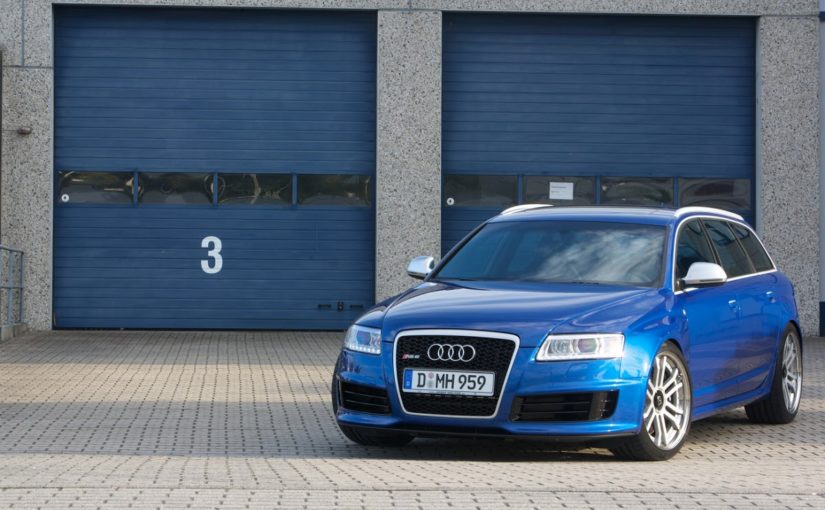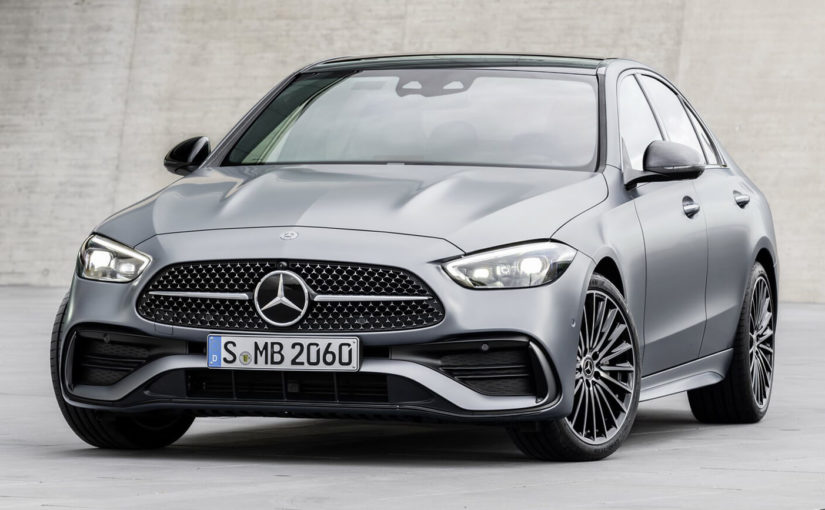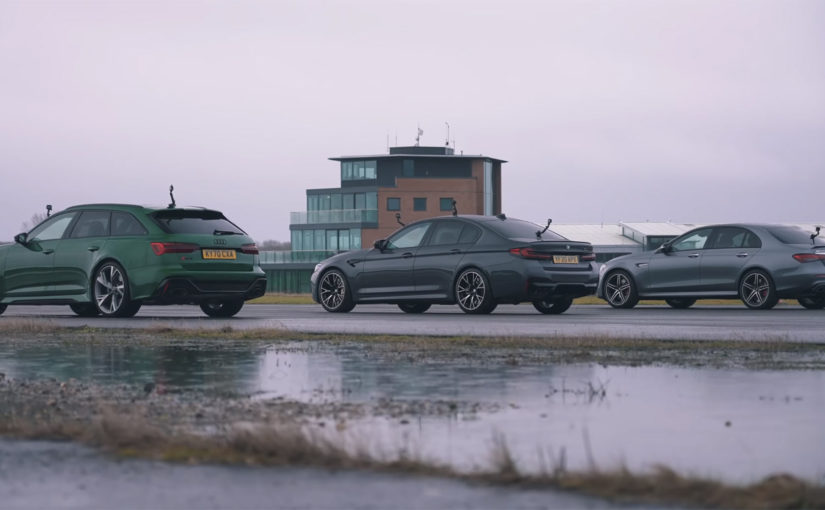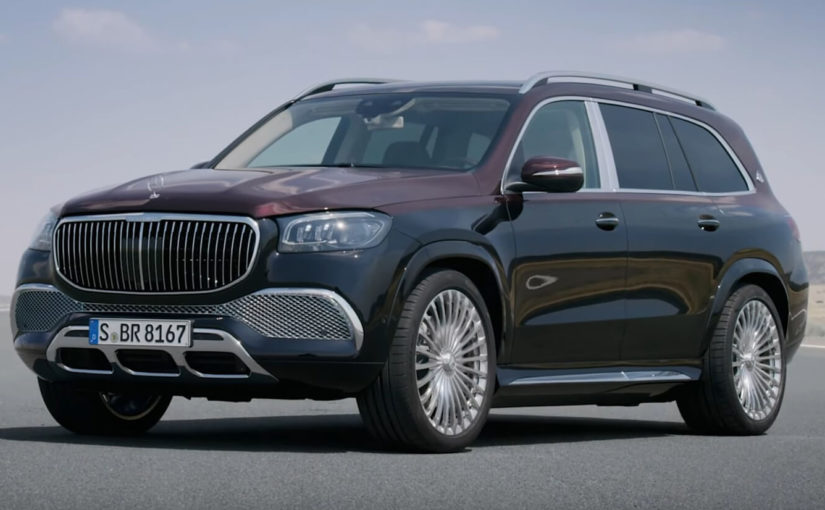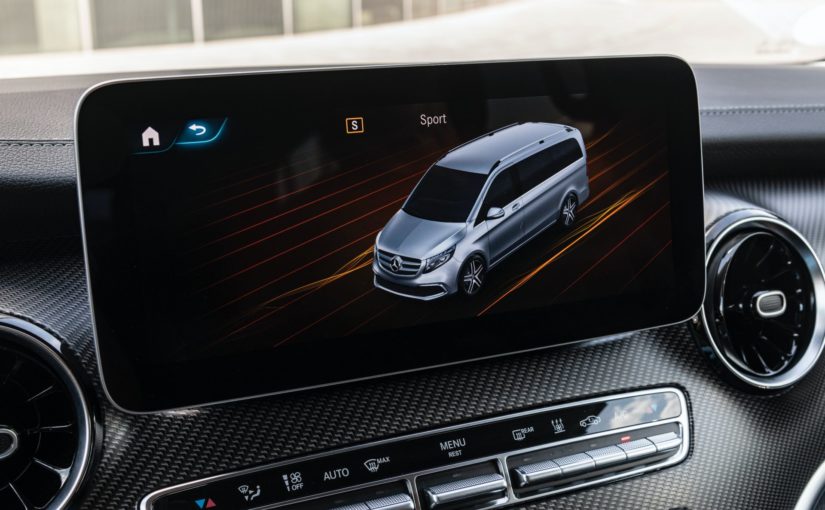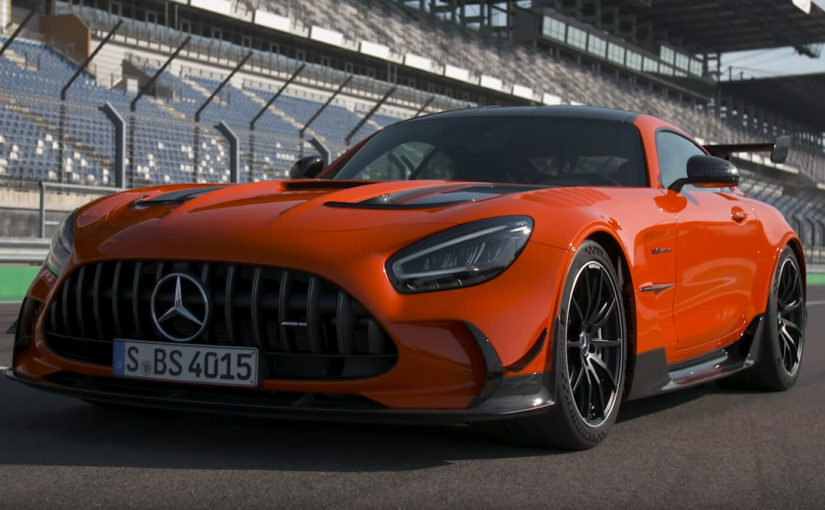The millionaires’ Miata is back! Mercedes has overhauled the iconic SL roadster for only the seventh time in the model’s almost 70-year career, and this one takes on some seismic changes including standard all-wheel drive and the return of 2+2 seating after a three-decade absence.
Sometimes when automakers say a car is new, the fresh content that justifies that tag is limited to the bumpers at either end. But the SL really is new from the ground up, built on a new multi-material platform made from aluminum, steel, magnesium, and composites that it will eventually share with the next AMG GT coupe.
Measuring 185.2-inches (4705 mm) long and 106.3-inches (2700 mm) between the axles the new SL is 2.9-inches (74 mm) longer and rides on a wheelbase stretched 4.5-inches (115 mm) over the previous SL’s. It’s also 6-inches (154 mm) longer than the old AMG GT Roadster, which the SL sends to an early grave, remedying the previously bizarre situation where Mercedes had two different two-seat V8 convertible sports cars covering similar market turf.
Two Cars In One
[embedded content]
The new SL does the job of both and gets a subtle but significant name change to mark the promotion. Every version is now called Mercedes-AMG SL and comes with the AMG-specific Panamericana toothy grille to reflect that that legendary two-seater is now part of the AMG family.
Related: 2023 Mercedes-AMG EQE 53 Spied Almost Undisguised
And, for now, at least, every version has an engine worthy of that badge. Additional powertrain options will be added in time, including a PHEV and probably a mild-hybrid V6, but from launch, the choice is limited to a pair of M177 4.0-liter V8s you’ll recognize from other AMGs, with their two turbos once again nestled in the vee.
Choose From Two V8s, Or Wait For The PHEV

The entry-level SL 55 makes 470 hp and 516 lb-ft, while the punchier SL 63 ups those numbers to 577 hp and 590 lb-ft thanks to more turbo boost, improved airflow, and a software tweak. Even the base car can hit 62 mph in 3.9 seconds, but the SL 63 cuts that down to 3.6 seconds, and we’d expect the PHEV to go even harder if it borrows its hardware from the 831-hp AMG GT 63 E 4dr unveiled this September’s Munich show. Find a suitably empty stretch of derestricted autobahn and the SL 55 will top out at 183 mph, leaving the SL 63 to romp ahead to 196 mph.
Whichever of the two V8s you go for, power is channeled through Mercedes-AMG’s nine-speed automatic transmission which swaps a torque converter for a wet clutch pack that should make the SL rev faster and feel more responsive to a stab on the gas. And from there, for the first time ever in an SL, the power is sent to all four wheels, both models getting a 4Matic+ tag.
Modern five-link front suspension, carbon-ceramic brakes, and rear-wheel steering also come standard on both 55 and 63, the back wheels doing the usual trick of turning the opposite way to the fronts at slow speed (though in this case up to 62mph, so not that slow) and the same way at higher speeds. But the SL 63 asserts its superiority with air suspension and active roll control; the SL 55, which you can spot by its red, rather than yellow brake calipers, makes do with conventional steel coils.
More Space, Lighter Fabric Roof

Other significant changes include the addition of two small rear seats that will accommodate bodies up to 4 ft 11-inches (1.5 m), effectively limiting them to children and Snow White’s crew, and a switch from a retractable hardtop back to a triple-layer fabric convertible top.
Ditching the retractable roof concept lowers the center of gravity and is worth a 46 lbs (21 kg) saving, and it saves on trunk space when folded, too. Mercedes claims you can fit two golf bags in the trunk even with the tops down. You struggled to get much more than a golf club in older SLs when the sun was shining.
Related: A Brief Look Back At The History Of The Mercedes-Benz SL
[embedded content]
And when the sun does break out from behind the clouds, you’ll be feeling those rays faster than before. The new roof cycles from open to closed in 15 seconds, a 5-second reduction, and can be operated at speeds of up to 37 mph. Benz’s Airscarf system that pumps warm air out of the front seat headrests comes standard ‘on eight-cylinder models’, says Mercedes, hinting that the range will be extended to include less powerful, less luxurious six-cylinder models later.
Whether those entry-level cars will drop in wheel size from the 19-inchers that feature on the SL 55 remains to be seen, but there will be plenty of options to upsize, either to the same 20-inch diameter rolling stock fitted to the SL 63, or bigger again, to 21 inches.
An SL With Attitude


Predictably, it’s the twenty-ones you can see in the pictures, and they do a great job of filling the SL’s swollen fenders. Visually, the 2022 SL has more in common with the outgoing AMG GT Roadster than it does with the dated, bland SL it replaces. The plus-two seating gives it a less cab-backward look than the Roadster, and the triangular LED headlights add some extra aggression to the face, but anyone looking to trade in a Roadster will feel right at home here.
Related: The Mercedes-Benz 300 SL Was An Ergonomic Nightmare But An Engineering Dream
AMG GT 4 Door owners, meanwhile, might recognize echoes of their car in the styling of the rear end, which comes standard with an automatically adjusting five-position spoiler to keep the tail glued to the ground. And if you want to make the nose equally sticky, you can option an Aerodynamics Package that includes visible bumper winglets, just like a race car’s, and an electronically adjustable carbon spoiler below the nose that extends by 1.6-inches (40 mm) at higher speeds, providing a venturi effect and cutting front axle lift by 110 lbs (50 kg) at 155 mph.
Hit The Track In Comfort

Contrast that almost invisible technology with the very visible tech inside the cabin. Mercedes opted not to deploy its full triple-display Hyperscreen dashboard as seen in the EQS sedan, choosing a more classically sporty design for the SL’s interior. And it decided against giving the SL the full suite of its latest autonomous technology we saw on the 2021 S-class, though it does have the usual steering assistance and automatic braking systems you’d expect from an expensive Mercedes.
But with an adjustable S-Class-style tablet on the console running Benz’s latest MBUX infotainment package, a 3D digital instrument cluster, and a head-up display, the 2022 SL is a car that tries to carefully tread the line between sports car and luxury car, hoping it can keep both camps happy. Do you think Mercedes managed it?
PHOTO GALLERY
more photos…
For GREAT deals on a new or used Nissan check out Glendale Nissan TODAY!
